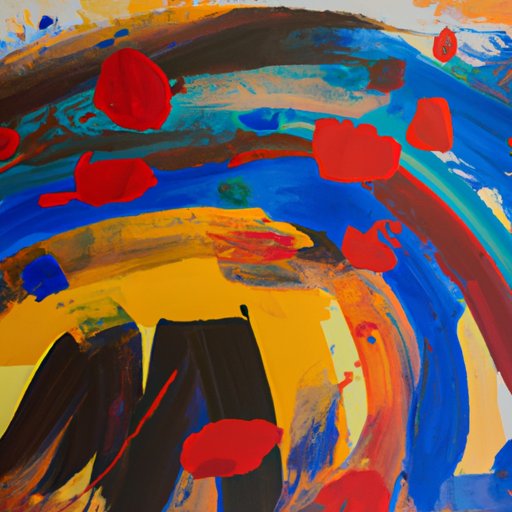Introduction
Abstract art is a form of art that does not depict any recognizable objects or subjects. Instead, it focuses on the use of colors, shapes, and textures to create an overall aesthetic. Abstract art can be used to express emotions, convey ideas, and evoke a particular mood. It is often considered to be a more challenging form of art due to its lack of representational elements.
This article is designed to provide an introduction to abstract art for beginners. It will cover the basic materials needed, color and shape techniques, use of negative space, how to add texture and pattern, and tips for making your artwork visually appealing. By the end of this article, you should have a better understanding of how to create your own abstract art.
Materials Needed
Before you start painting, you will need to gather the necessary materials. The most important materials are paints, brushes, and a canvas. For paint, you can use either acrylics or oils. Acrylics are easier to work with and dry quickly, while oils take longer to dry but can be blended together more smoothly. Brushes come in a variety of sizes and shapes, so it’s best to experiment with different ones to find the one that works best for you. Finally, you will need a canvas on which to paint. Canvases can be bought pre-made, or you can make your own by stretching a piece of fabric over a wooden frame.
Color and Shapes
Color is one of the most important elements of abstract art. You can use bright and vivid colors to create a bold statement, or muted and subtle tones for a more calming effect. It is also important to understand the basics of color theory, such as the color wheel and how complementary colors can be used to create balance and contrast. You can also combine colors to create new shades and hues, or use them to create shapes such as circles, squares, and triangles.
Negative Space
Negative space is an important concept in abstract art. It refers to the empty space between shapes and forms on the canvas. Negative space can be used to create balance, draw attention to certain areas of the painting, and create a sense of depth. Examples of successful use of negative space include leaving a portion of the canvas blank or creating a shape by outlining the negative space around other shapes.
Textures and Patterns
Adding texture and pattern to your abstract painting can make it more visually interesting. To create texture, you can use a variety of tools such as sponges, rags, combs, and even your hands. Once you have created the texture, you can then combine it with color to create a unique look. You can also use various techniques to create patterns, such as overlapping shapes or using geometric shapes to create a repeating design.
Visual Appeal
The final step in creating an abstract painting is to make sure it has visual appeal. This can be done by adding dynamic elements such as lines, curves, and diagonals. You can also use lighting and shadows to create a three-dimensional effect. Looking at examples of successful abstract art can also give you some insight into how to make your own artwork more visually appealing.
Conclusion
Creating abstract art can be a fun and rewarding experience. By understanding the basics of materials, color and shape, negative space, texture and pattern, and visual appeal, you can create your own unique and beautiful abstract paintings. With practice and experimentation, anyone can learn to create stunning abstract art.
(Note: Is this article not meeting your expectations? Do you have knowledge or insights to share? Unlock new opportunities and expand your reach by joining our authors team. Click Registration to join us and share your expertise with our readers.)
